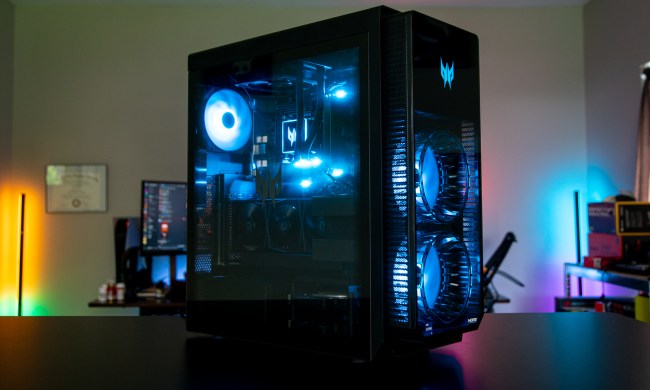One of the more interesting products that Jacobowitz showed us was the one he called his personal favorite, the Light L16 camera, which has 16 lenses built in. Using Snapdragon, the 16 lenses all snap pictures at the same time, which are merged into one DSLR-quality image.
Qualcomm refers to this as “computational photography.” Working together, the lenses create a “depth map,” which lets you use depth-of-field effects like blurring the background similar to a DSLR. This also lets you re-focus the image after you’ve taken it, similar to the cameras in some recent smartphones.
“The way to get amazing, awesome image quality from a big image sensor is to break it into pieces,” Jacobowitz told Digital Trends. “So if you break it into pieces, you get smaller image sensors and smaller lenses that you can fit in a compact design.
Jacobowitz also showed us the Lenovo Miix 630, which was announced late last year and is the first Windows 10 laptop to be powered by a Snapdragon chip. Not only is the Miix 630 thin and light, but is also capable of up to 20 hours of video playback on a single charge. Jacobowitz says that Microsoft’s own testing indicates that a person using the laptop for web browsing and document editing could get up to a week on a single charge. Asus and HP also have Snapdragon-powered laptops in the works.
“I shouldn’t even say this, because you know, I shouldn’t tell the competitors this, but that’s how we get the awesome battery life,” Jacobowitz says. “It’s not just a CPU, it’s not just a GPU, it’s not just a DSP, it’s not just an ISP. We have all of these things, and the idea is that if you can spread all of that processing out to the right type of architecture, then you can get the best battery life for that exact process.”


